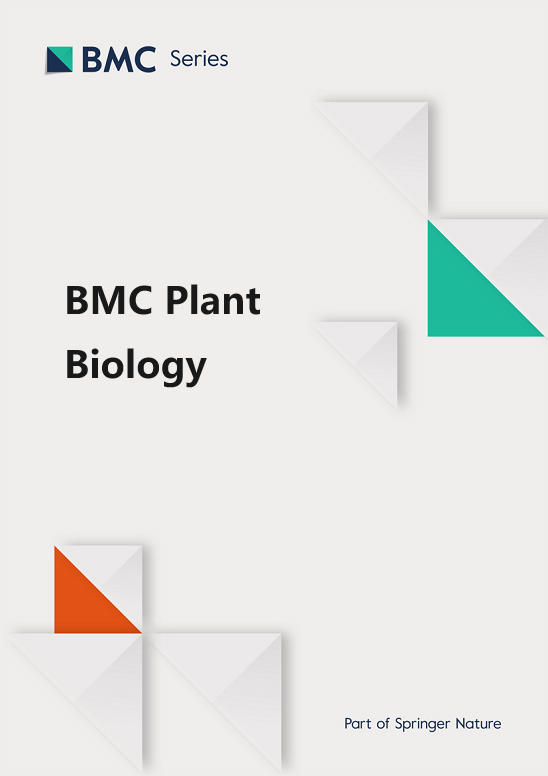Genome-wide association analysis of grain yield and Striga hermonthica and S. asiatica resistance in tropical and sub-tropical maize populations
IF 4.8
2区 生物学
Q1 PLANT SCIENCES
引用次数: 0
Abstract
Genetic improvement for Striga hermonthica (Sh) and S. asiatica (Sa) resistance is the most economical and effective control method to enhance the productivity of maize and other major cereal crops. Hence, identification of quantitative trait loci (QTL) associated with Striga resistance and economic traits will guide the pace and precision of resistance breeding in maize. The objective of this study was to undertake a genome-wide association analysis of grain yield and Sh and Sa resistance among tropical and sub-tropical maize populations to identify putative genetic markers and genes for resistance breeding. 126 maize genotypes were evaluated under controlled environment conditions using artificial infestation of Sh and Sa. The test genotypes were profiled for grain yield (GY), Striga emergence counts at 8 (SEC8) and 10 (SEC10) weeks after planting, and Striga damage rate scores at 8 (SDR8) and 10 (SDR10) weeks after planting. Population structure analysis and genome-wide association mapping were undertaken based on 16,000 single nucleotide polymorphism (SNP) markers. A linkage disequilibrium (LD) analysis in 798,675 marker pairs revealed that 21.52% of pairs were in significant linkage (P < 0.001). Across the chromosomes, the LD between SNPs decayed below a critical level (r2 = 0.1) at a map distance of 0.19 Mbp. The genome-wide association study identified 50 significant loci associated with Sh resistance and 22 significant loci linked to Sa resistance, corresponding to 39 and 19 candidate genes, respectively. The study found non-significant QTL associated with dual resistance to the two examined Striga species Some of the detected genes reportedly conditioned insect and pathogen resistance, plant cell development, variable senescence, and pollen fertility. The markers detected in the present study for Sa resistance were reported for the first time. The gene Zm00001eb219710 was pleiotropic, and conditioned GY and SEC10, while Zm00001eb165170 affected SDR8 and SDR10, and Zm00001eb112030 conditioned SDR8 and SDR10 associated with Sh resistance. The candidate genes may facilitate simultaneous selection for Sh and Sa resistance and grain yield in maize after further validation and introgression in breeding pipelines. Overall, we recommend breeding maize specifically for resistance to each Striga species using germplasm adapted to the endemic region of each parasite.热带和亚热带玉米群体谷物产量与Striga hermonthica和S. asiatica抗性的全基因组关联分析
抗Striga hermonthica(Sh)和S. asiatica(Sa)的遗传改良是提高玉米和其他主要谷类作物产量的最经济、最有效的控制方法。因此,鉴定与Striga抗性和经济性状相关的数量性状位点(QTL)将指导玉米抗性育种的步伐和精度。本研究旨在对热带和亚热带玉米群体的谷物产量、Sh和Sa抗性进行全基因组关联分析,以确定抗性育种的潜在遗传标记和基因。在受控环境条件下,利用 Sh 和 Sa 的人工侵染对 126 个玉米基因型进行了评估。对受试基因型进行了谷物产量(GY)、播种后 8 周(SEC8)和 10 周(SEC10)的 Striga 出现计数以及播种后 8 周(SDR8)和 10 周(SDR10)的 Striga 危害率评分分析。基于 16,000 个单核苷酸多态性(SNP)标记进行了种群结构分析和全基因组关联图谱绘制。对 798,675 个标记对进行的连锁不平衡(LD)分析表明,21.52% 的标记对存在显著连锁(P < 0.001)。在整个染色体上,SNP 之间的 LD 在图距为 0.19 Mbp 时衰减到临界水平(r2 = 0.1)以下。全基因组关联研究发现了 50 个与 Sh 抗性相关的显著位点和 22 个与 Sa 抗性相关的显著位点,分别对应 39 个和 19 个候选基因。该研究发现了与对两种所研究的 Striga 物种的双重抗性相关的非显著 QTL,其中一些检测到的基因据报道与昆虫和病原体抗性、植物细胞发育、可变衰老和花粉育性有关。本研究首次报道了检测到的抗莎基因标记。基因 Zm00001eb219710 具有多效性,对 GY 和 SEC10 产生影响,而 Zm00001eb165170 则影响 SDR8 和 SDR10,Zm00001eb112030 对与 Sh 抗性相关的 SDR8 和 SDR10 产生影响。这些候选基因在育种流水线中进一步验证和导入后,可促进玉米同时进行 Sh 和 Sa 抗性及谷物产量的选择。总之,我们建议利用适应每种寄生虫流行地区的种质,专门培育玉米对每种Striga物种的抗性。
本文章由计算机程序翻译,如有差异,请以英文原文为准。
求助全文
约1分钟内获得全文
求助全文
来源期刊

BMC Plant Biology
生物-植物科学
CiteScore
8.40
自引率
3.80%
发文量
539
审稿时长
3.8 months
期刊介绍:
BMC Plant Biology is an open access, peer-reviewed journal that considers articles on all aspects of plant biology, including molecular, cellular, tissue, organ and whole organism research.
 求助内容:
求助内容: 应助结果提醒方式:
应助结果提醒方式:


